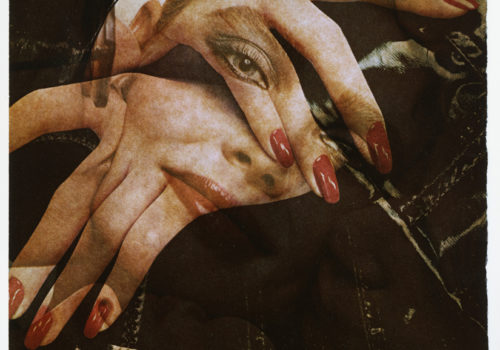The Robert Koch Gallery presents Robert Heinecken and Edmund Teske: Experimental Photomontage, an exhibition pairing these innovative photographers together for the first time. Both teachers in the University of California, Los Angeles’s influential photography program during the 1960s, Teske and Heinecken are known for their alternative approaches and processes that challenged and expanded traditional notions of the medium.
Heinecken, the founder of UCLA’s photography program, rarely used a camera, instead drawing on appropriated imagery from magazines and newspapers, and treating them to techniques like lithography, etching, camera-less exposure and photo emulsion on canvas. Teske, who began creating composite images in the mid-1930s, was a popular figure in 1960s counterculture in LA, running in circles that included Jim Morrison and filmmaker Kenneth Anger. Though Teske worked in relative obscurity during his lifetime, his persistent innovation and dedication to his own lyrical path had a profound impact on a generation of younger photographers.
Teske and Heinecken first met in the 1950s when Teske was modeling for a figure drawing class at UCLA, where Heinecken was an undergraduate. Later as colleagues, these men shared a friendship that fueled their distinct creative approaches. Heinecken referred to Teske as “a spiritual mentor,” saying Teske “allowed me to see photography as something larger and more expansive than what I thought it was. I was struck by the idea that the photograph could be manipulated and superimposed with other images. It could be poetic and not limited to reality.” Teske in turn, credits Heinecken with supporting his career at many junctures, including inviting him to join the UCLA faculty as a visiting professor from 1965-70.
The exhibition features two of Heinecken’s complete portfolios—Are you Rea (1968) and Recto/Verso, published by Landweber/Artists (1989)—alongside an overview of Teske’s innovative duo-tones, solarizations, and unique variants. Though both explore the terrain of composite imagery, Teske used personal source material, such as postcards and images of friends and family, and used darkroom alchemy, to explore the expressive and emotional potential of the medium, while Heinecken’s more analytic approach drew from mass media like newspapers and magazines. In the photograms on view, Heinecken projected light through a magazine page to superimpose images from both sides at once. Teske’s carefully composed images are imbued with romantic and spiritual overtones, while Heinecken exploits random combinations to excavate cultural meaning, and expose the constructedness of desire in advertising.
Robert Heinecken and Edmund Teske: Experimental Photomontage
On view through June 30th
Robert Koch Gallery
49 Geary Street
San Francisco
94108, California
















